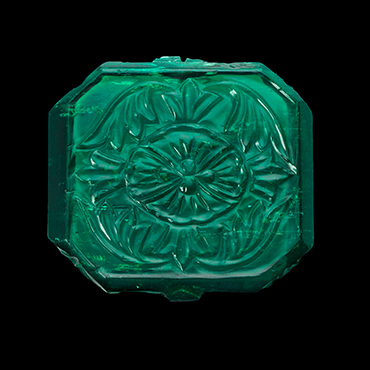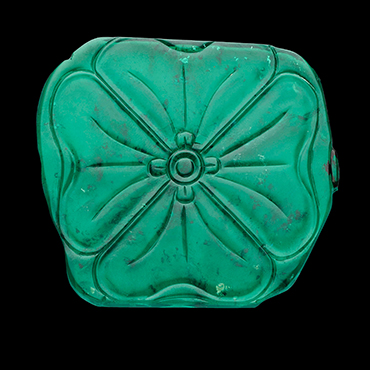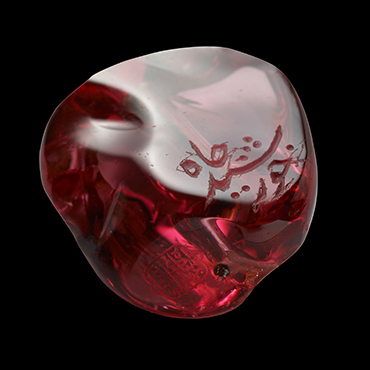From the Royal Treasury
In his Memoirs, the emperor Jahangir (r. AH 1014–37/1605–27 CE) makes constant reference to rubies, emeralds, and diamonds in the imperial collection. The English ambassador to his court, Thomas Roe, described Jahangir as “the treasury of the world” for his love of gems, “heaping rich stones as if he would rather build than wear them.” Precious stones played an important role in the social life of the empire, not only as direct acquisitions by the emperor and his successors but also as gifts from them to their favoured courtiers and vice versa.

Spinels such as this example had a clear dynastic importance, passed on from one ruler to the next. This stone has been inscribed twice, several hundred years apart, by the Mughal emperor Jahangir, dated AH 1019/1610–11 CE, and by the senior Hyderabadi nobleman Khurshid Jah (AH 1253–1319/1838–1902 CE). Spinels were mined in the Badakhshan region of northern Afghanistan, and the practice of engraving them with the names of their royal owners is attested at least as early as the 15th century CE. While the Mughals believed in facet-cutting diamonds, they usually wore spinels, and sometimes emeralds, in their natural formation, thereby retaining their weight and mass while providing a surface sufficient for dynastic inscriptions.

Although emeralds occur naturally in some parts of South Asia, particularly large and finely colored examples such as these were almost certainly imported from Colombia. Emeralds from this source were eagerly sought after by Mughal emperors, especially Jahangir and his son Shah Jahan (r. AH 1037–68/1628–58 CE) as well as other rulers in India. The stones would probably have arrived in India via the Portuguese colony in Goa, with the largest and finest examples sent with the intention to find a royal buyer willing and able to pay far more than European collectors.
Spinel
India, AH 1019/1610–11 CE
2.14 × w. 2.15 × d. 1.1 cm, 55.9 ct
The Al Thani Collection, ATC204
Emerald
North India, c. AH 1060/1650 CE
3.2 × w. 3.8 cm, 87.8 ct
The Al Thani Collection, ATC471
Emerald
India, c. AH 1060–1160/1650–1750 CE
6.2 × w. 5.5 cm, 212.3 ct
The Al Thani Collection, ATC632

